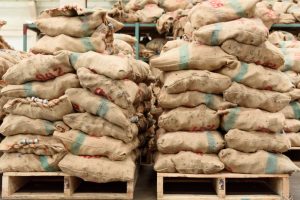
U.S. Sen. Bob Corker (R-TN) recently highlighted how the United States could do more to address worldwide hunger and starvation through the Farm Bill without increasing its $2 billion in annual contributions for emergency food aid.
Corker, the chairman of the Senate Foreign Relations Committee, delivered his remarks during an Oct. 19 hearing that focused on modernizing the Food for Peace (FFP) program. Operated by the United States Agency for International Development (USAID), FFP provides emergency, developmental and nutritional support programs that help fight hunger around the world.
“We are currently facing a historic humanitarian crisis with over 800 million people worldwide who are in need of food aid,” Corker said. “The United States continues to be the world leader in providing more than a third of all emergency food aid — over $2 billion annually. Sadly, despite our generosity, there are shortfalls from what is needed due to other donor nations not fully meeting the challenge.
Through modernizing the FFP program and crafting targeted reforms as part of next year’s Farm Bill, Corker said there was opportunity to feed more people without the United States having to spend more money.
More than half of U.S. food aid is administered through the Farm Bill. That subjects FFP and related programs to commodity and cargo preference requirements that aid be sourced almost entirely by U.S. farmers and shipped on U.S. vessels, Corker said.
“Because of these utterly ridiculous requirements, only 35 to 40 cents of each dollar is actually used to provide food to people who are starving,” Corker said. “If we relaxed the commodity preference to match the needs overseas, the overhead costs would drop dramatically. U.S. farmers would still play a vital role in the program, and we would free up over $300 million to be used to feed up to 9.5 million more starving people each year.”
He noted that a major barrier to modernizing the FFP program stems from the entities that profit from cargo preference rules.
Despite claims from the shipping industry that 40 ships and 2,000 mariners required for military sealift would be jeopardized by reduced food aid shipments, Corker added, a review of data from USAID revealed that just five U.S. ships out of a fleet of 175 rely on food aid shipments. USAID is the lead U.S. government agency that provides foreign assistance, including advancing food security.
In response, Corker called on experts to testify before the committee on facts, analysis and research to help determine the actual impact of food aid commodity and cargo preference requirements.
Matthew Nims, the acting director of the Office of Food for Peace at USAID, testified that conflict zones in South Sudan, Somalia, Nigeria and Yemen alone have put more than 20 million people at risk of starvation. He said that increased global need for food aid requires continuous reevaluation of how programs can be made more efficient and effective.
FFP receives funding, Nims testified, through International Disaster Assistance that can be used for emergency food relief and through funds from Title II of the Food for Peace Act that help deliver U.S. commodities such as wheat and rice to foreign shores.
“In today’s challenging environment, Food for Peace faces many obstacles to improving the speed and cost-effectiveness of aid delivery,” Nims said. “These obstacles run the gamut from political challenges, such as working in conflict countries, to technical challenges, such as ensuring the delivery of nutritious foods to the neediest individuals and communities.”
In fiscal year 2017, Nims added, FPP didn’t receive a single offer for ocean freight services from a U.S. flag vessel for more than 253,620 metric tons of commodities. “… The majority of food assistance shipped on U.S. flagged vessels is done so through only four ships, which can sometimes contribute to USAID’s challenges to respond, particularly in emergencies.”
Another obstacle, Nims said, was a lack of regular direct shipping services to certain regions. “Food for Peace destinations and U.S. flag vessel routes are not always well-matched, as regular U.S. flag services do not exist to most of our destination ports directly, which requires that USAID rely on a hub and spoke system to deliver our food aid,” he said.
The cost differential also has major impacts on programs, and cargo preference requirements mean that millions more is paid for ocean freight from the FPP budget.
Corker said he had spoken with the Tennessee Farm Bureau about challenges with the FFP program. “They were aghast at the fact that Congress had these ridiculous requirements in place and that people are starving because of these ridiculous requirements when their goal is to feed America and to feed the world,” he said.
“There are few areas in government where we can have more impact on more lives without additional resources than by modernizing the Food for Peace program,” Corker added.



